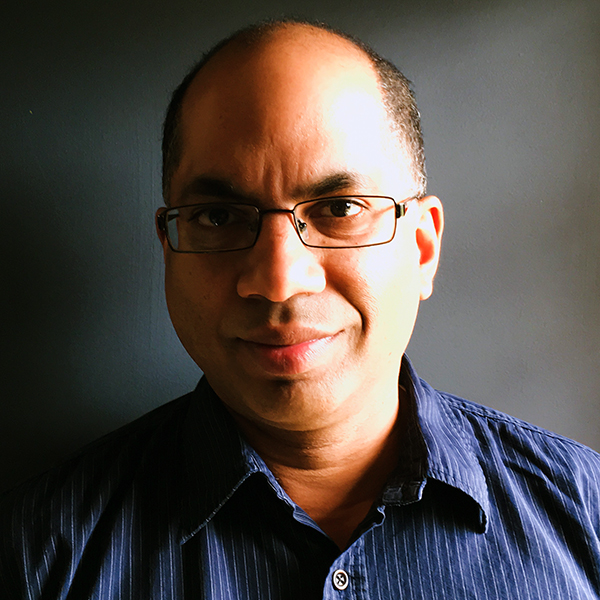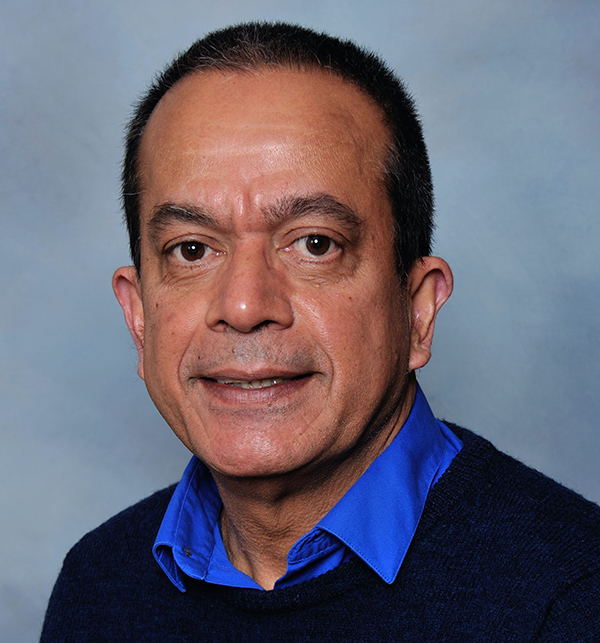Ocius Technologies, UA and Case Western Team receives $1.5M research grant from DARPA
Ocius Technologies LLC and the Department of Electrical and Computer Engineering at The University of Akron (UA) announce the receipt of a $1.5 million Defense Advanced Research Projects Agency (DARPA) Small Business Technology Transfer (STTR) Phase II award in collaboration with Case Western Reserve University (CWRU).

Dr. Arjuna Madanayake
This award will fund research over a three-year period that began on Sept. 1, 2017, and will explore how computationally intensive engineering and physics problems can be more rapidly solved using new types of analog computers. Designing and implementing high-speed analog computers based on RF/mm-wave circuits would greatly accelerate the solution of linear and non-linear partial differential equations arising in applications related to electromagnetics, magnetohydrodynamics and fluid mechanics.
This Phase II award follows a successful Phase I research effort using resources from Ocius Technologies and The University of Akron. Over 16 months, the team successfully researched analog co-processors with a focus on simulation and design.

Dr. S.I. Hariharan
Located in Akron, both Ocius Technologies and The University of Akron Research Foundation (UARF) provided entrepreneurial support to the research headed by Dr. Arjuna Madanayake and Dr. S.I. Hariharan, both of UA. Ph.D. student Nilan Udayanga also supported this effort and will continue on Phase II. Joining the team from Case Western Reserve University will be Dr. Soumyajit Mandal.
“Ocius Technologies is pleased to be partnered with leading researchers in the field of analog circuit design,” said Dr. Dale H. Mugler, CTO of Ocius Technologies. “This research has the ability to drive revolutionary processes into how simulations and complex models are calculated today, leading to better, faster, and safer systems and products.”
“As noted on its website, ‘DARPA explicitly reaches for transformational change instead of incremental advances’ by funding projects that have the potential for disruptive advancements,” noted Steve Nichols, CEO of Ocius Technologies. “This team is driving new approaches to tackle hard physics simulations not easily achievable using current technologies. In addition to helping the government adopt these new methods, Ocius is looking for commercial partners that need increased speed in their complex product development.”
For more information about this project, please contact Dr. Dale H. Mugler at 330-968-9228 or dalemugler@gmail.com.
Media contact: Lisa Craig, 330-972-7429 or lmc91@uakron.edu.
Project Q and A
Dr. Arjuna Madanayake is a principal investigator and associate professor of electrical and computer engineering here.
Q: What is the goal of this research?
A: We will explore new algorithms and high-speed analog circuits for computation of physics simulations based on various types of differential equations. Our goal is to build a new type of computer that can help speed up the simulation of fusion reactors, which are the key component in safe and sustainable nuclear energy for future generations.
Q: What makes this technology distinctive or unique?
A: Analog computing was common during the 1930-50s. However, with the invention of digital computers and software, and with technology scaling that follows Moore’s Law, there has been a period of exponential growth in digital computers and the software industry. The result has been that analog computers have fallen out of fashion for 50+ years. However, analog technologies have increased in speed by a factor of about a million or more since the 1930s. In fact, today’s analog transistors are 100-1,000 times faster than digital technologies. What makes our technology distinctive is that we will be exploiting advanced developments in high-speed analog to dramatically speed up some of the difficult computing problems for scientific applications.
Q: What are some other potential applications of this technology? In what industries might this be used?
A: Computational electromagnetics applications like antennas for defense and wireless communications, wireless networking paradigms like emerging 5G systems, the internet-of-things (IoT) wireless sensor networks, certain types of biomedical imaging techniques based on radio frequency waves, or magnetohydrodynamic systems like plasma-based systems or fusion experiments may have uses for the technology eventually, if things work out. We have to remember that this is a high-risk, high-return project, so real-world applications are far-off at the moment. We hope to establish some compelling results for new algorithms and circuit prototypes and make progress with a commercialization strategy that will prove the viability of the technology for real-world applications in the commercial space.
Q: What are the next steps?
A: Once we get through Phase-II, we hope to work with The University of Akron Research Foundation, Ocius Technologies and Case Western Reserve University to pitch any promising results to interested parties such as defense/aerospace companies or venture capital firms.
